Designing a beautiful garden doesn’t have to mean dedicating endless hours to upkeep. With the right planning and selection of low-maintenance plants, you can achieve a stunning, relaxing outdoor space that requires minimal work. Whether you’re a beginner gardener, a busy homeowner, or simply want to enjoy your garden without constant fuss, using low-maintenance plants in your layout is the way to go.
In this guide, we’ll explore smart garden layout tips that emphasize simplicity, resilience, and year-round beauty—all with low-maintenance plants as the stars.
Why Choose Low-Maintenance Plants?
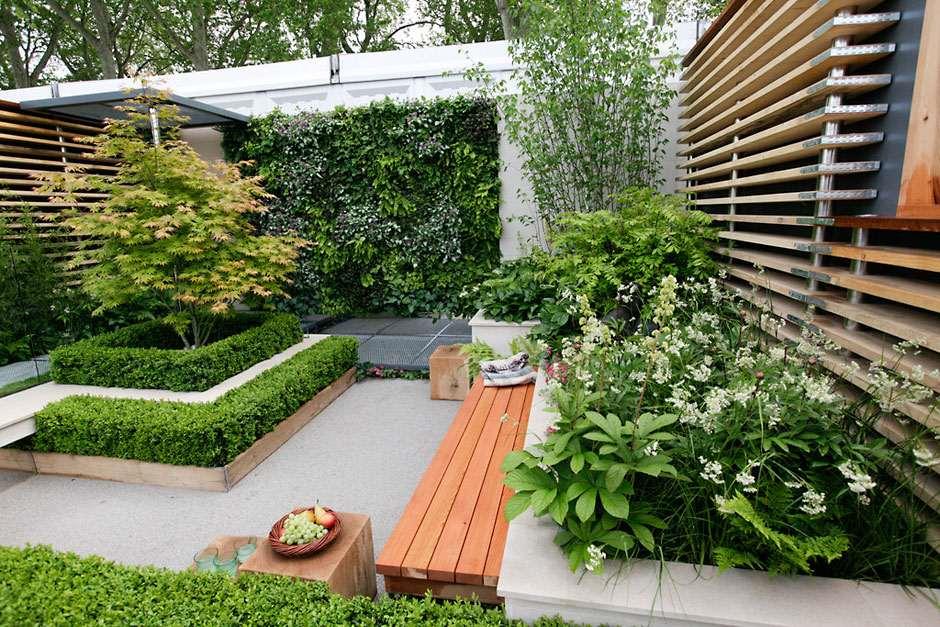
Low-maintenance plants are species that thrive with minimal attention, often being drought-tolerant, pest-resistant, and adaptable to various climates. Benefits of incorporating them include:
- Reduced watering needs
- Less pruning and deadheading
- Fewer pest or disease problems
- Long blooming or evergreen foliage
- Lower garden upkeep costs
This makes them ideal for both novice gardeners and those who prefer a laid-back gardening experience.
1. Start with Smart Garden Zoning
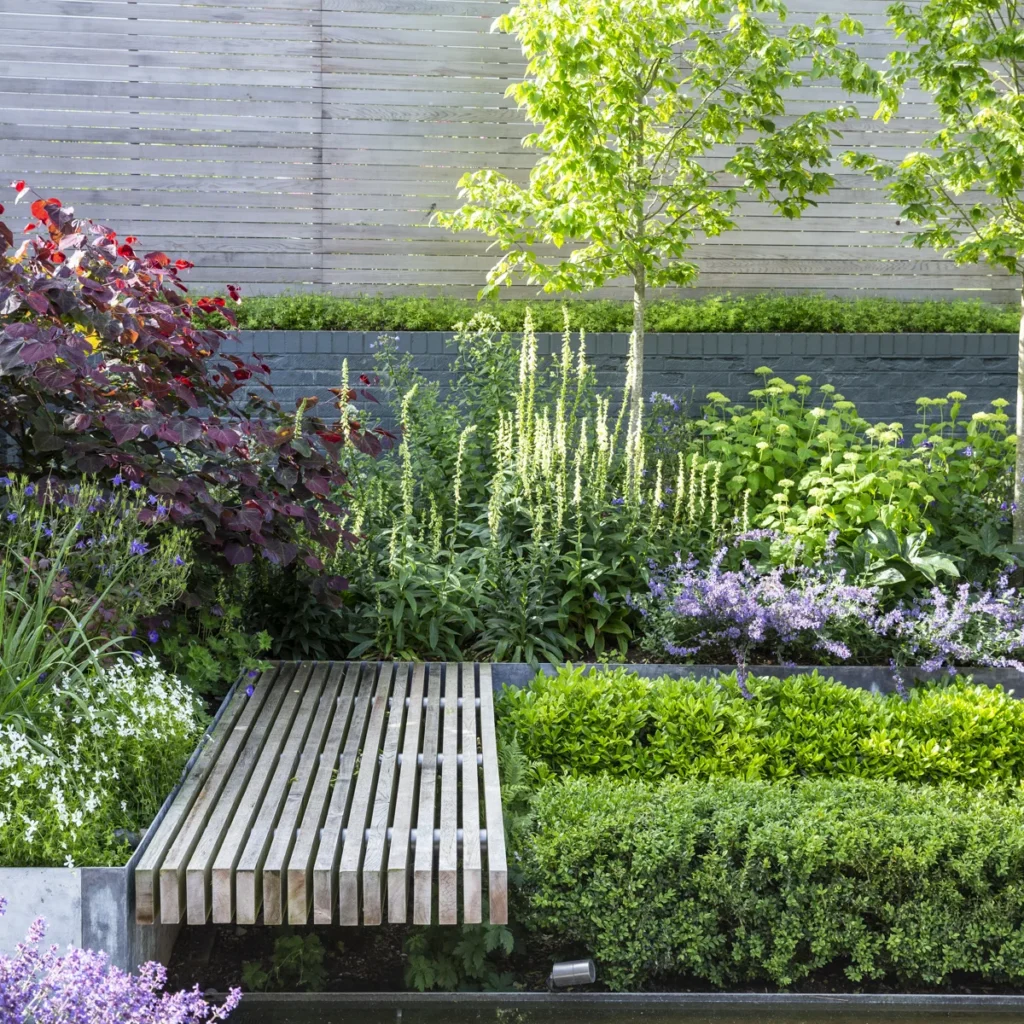
Before choosing plants, divide your garden into functional zones. Zoning helps you group plants with similar needs together and ensures efficient watering and maintenance. Here are a few typical zones:
- Sunny zones: Ideal for drought-tolerant flowering plants like marigolds, sedum, lavender, and ornamental grasses.
- Shady areas: Perfect for hostas, ferns, and impatiens.
- Pathways or borders: Use trailing or compact plants like creeping thyme or dwarf mondo grass.
- Containers or raised beds: Great for succulents, herbs, and annual color bursts.
This approach ensures your plants thrive with minimal intervention.
2. Go for Drought-Tolerant and Hardy Plants
The backbone of any low-maintenance garden is resilient plant varieties. Consider these options:
Best Drought-Tolerant Plants:
- Lavender – Fragrant, beautiful, and needs little water.
- Sedum (Stonecrop) – A succulent-like perennial that thrives in poor soil.
- Lantana – Vibrant and loved by pollinators.
- Coneflower (Echinacea) – Strong, pest-resistant, and stunning in mass planting.
Hardy Ground Covers:
- Creeping Jenny – Adds golden hues to shady or moist areas.
- Ajuga – Offers purple foliage and thrives in many conditions.
- Ice Plant – Drought-resistant with bright blooms.
These plants form the base of a fuss-free layout.
3. Incorporate Mulching and Drip Irrigation

To further reduce the need for weeding and watering:
- Mulch beds heavily with organic material like bark, straw, or leaf compost. Mulch suppresses weeds, retains moisture, and adds nutrients to the soil over time.
- Install a drip irrigation system. It targets the roots directly, minimizing water waste and avoiding fungal issues caused by overhead watering.
This combo ensures your garden stays hydrated and neat with little effort.
4. Use Raised Beds and Containers
Raised beds and containers provide better control over soil quality, drainage, and weeding. They also reduce back strain while gardening. Some great low-maintenance container plants include:
- Snake Plant (Sansevieria) – Thrives on neglect and low light.
- Zinnia – A bright, summer-blooming annual that requires minimal care.
- Herbs like rosemary and thyme – Aromatic and drought-friendly.
- Portulaca – Colorful and ideal for dry, sunny areas.
Use large containers for shrubs and cascading plants to reduce the number of pots you need to care for.
5. Plan for Year-Round Interest
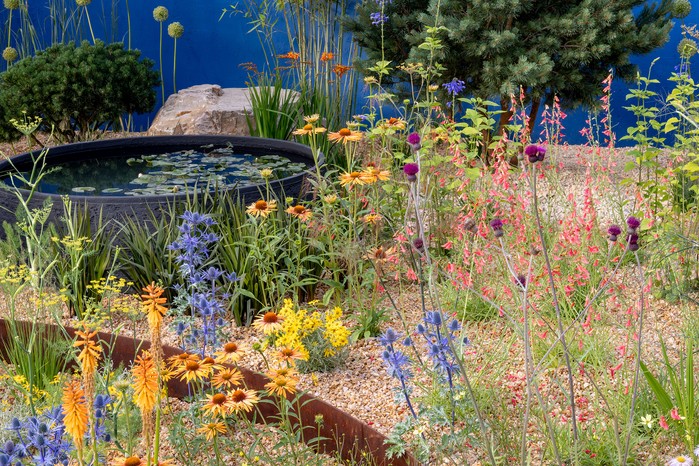
For a beautiful garden every season without constant planting, include a mix of:
- Evergreens (boxwood, juniper) – Provide structure even in winter.
- Long-blooming perennials (black-eyed Susan, gaura) – Keep color going for months.
- Flowering shrubs (hydrangeas, spirea) – Offer bursts of color with minimal care.
- Grasses (fountain grass, blue fescue) – Add texture and motion with no need to deadhead.
This variety ensures your garden looks full and vibrant year-round.
6. Limit the Plant Variety (But Go for Mass Planting)
Too many different types of plants create a chaotic and maintenance-heavy space. Instead:
- Stick to a cohesive plant palette that repeats throughout your garden.
- Plant in masses or clusters—this looks intentional, provides more visual impact, and reduces weeding gaps.
For example, a large swath of salvia or rudbeckia is not only stunning but also low-effort compared to tending scattered individuals.
7. Low-Maintenance Lawn Alternatives
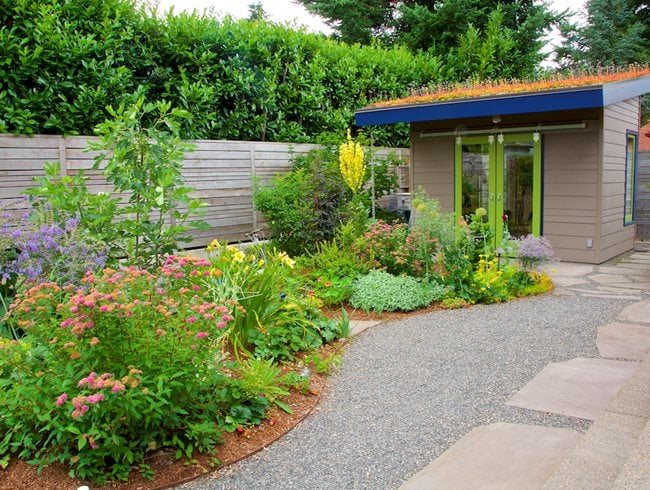
Lawns often require the most upkeep. If you’re looking to reduce mowing, watering, and fertilizing, try these alternatives:
- Clover lawns – Stay green longer and need less water.
- Creeping thyme – Fragrant and walkable.
- Ornamental grasses – A modern, prairie-inspired alternative.
- Gravel with potted plants – A clean, Mediterranean-inspired look.
Replacing or reducing traditional lawn areas can free up time and make your garden more sustainable.
8. Add Structural Elements for Visual Appeal
To give your garden shape and style without extra work, consider:
- Decorative gravel or pebbled paths
- Stepping stones or stone edging
- Trellises with climbing low-maintenance vines (like clematis or jasmine)
- Seating areas or birdbaths for passive enjoyment
Hardscaping elements enhance beauty and reduce the number of plant beds that need regular care.
9. Seasonal Cleanup Checklist
Low-maintenance doesn’t mean no maintenance at all. A few seasonal tasks will keep your garden healthy and neat:
- Spring: Cut back grasses and perennials, refresh mulch.
- Summer: Water during dry spells, deadhead if desired.
- Autumn: Remove any spent plants, compost, prep beds for winter.
- Winter: Plan next year’s layout and prune certain shrubs.
Just a few hours each season are usually enough for a well-planned garden.
10. Top 10 Low-Maintenance Plants for Garden Layouts
Here’s a quick list of foolproof options:
- Lavender
- Hosta
- Coneflower
- Russian Sage
- Daylily
- Sedum
- Heuchera (Coral Bells)
- Salvia
- Hydrangea (especially paniculata)
- Ornamental grasses
All these plants offer high impact with low effort.
Final Thoughts
Creating a low-maintenance garden is about smart planning and selecting plants that practically take care of themselves. With thoughtful zoning, resilient greenery, and simple design elements, you can enjoy a beautiful garden that doesn’t become a chore.
Whether you have a small backyard or a sprawling landscape, these layout tips and plant recommendations will help you craft an inviting, serene, and sustainable outdoor retreat.

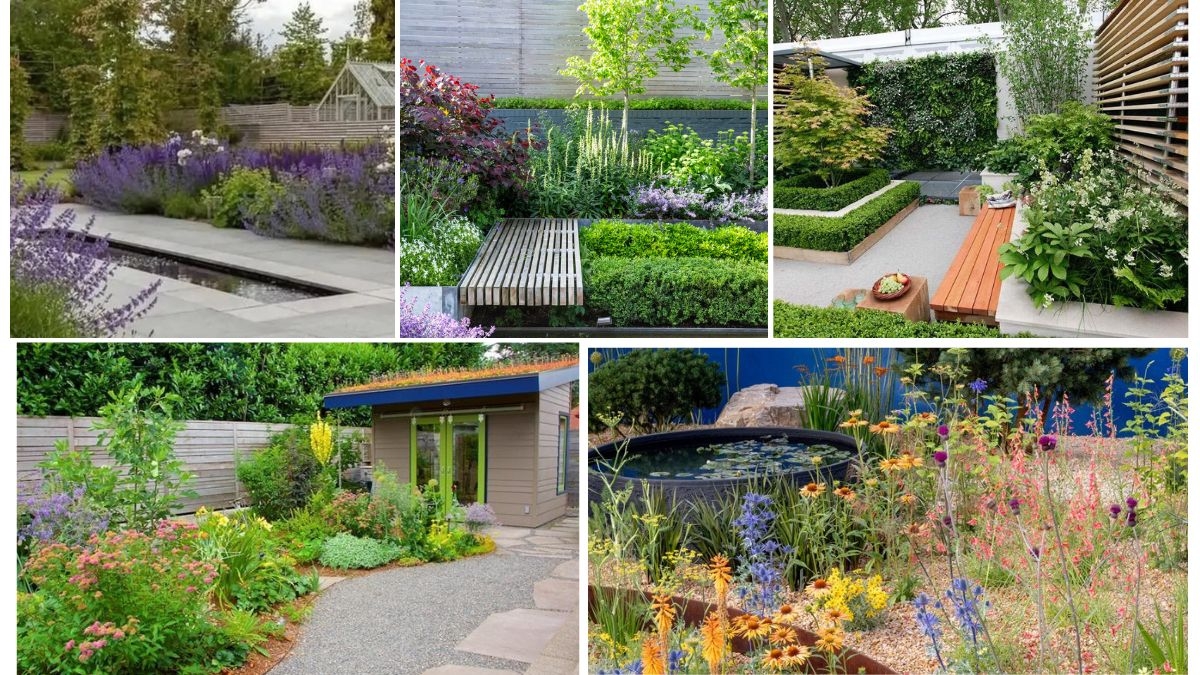





Leave A Comment